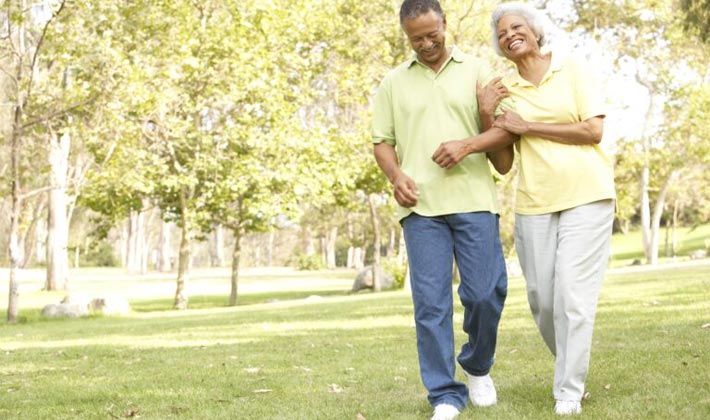Feet are one of the most overused yet overlooked parts of your body. Your feet help you get around and stay mobile and active. Staying active is what keeps you and your body healthy. So everyone needs to pay more attention to your feet – especially seniors. Healing rates can decline in seniors and there can be issues with circulation in the feet that also decrease the rate of healing.

Ingrown toenails are a common problem for seniors and can decrease a person’s activity especially if the ingrown nail gets infected. This can severely curtail activity because it is uncomfortable to walk. If a person has ingrown toenails, having shoes that are not wide enough and deep enough to avoid putting pressure on the foot can aggravate the current situation. These shoes can also be responsible for causing the ingrown toenails to reoccur.
Because the soft tissue in seniors’ feet is diminished, corns and calluses are more frequent and need proper care to make them go away and keep them from returning. Gradual removal of calluses is the best way to proceed. The root cause of corns is point source pressure between the foot and shoe. It is important to find the root cause and deal with it. If it is a problem with a broken insole in the shoe, replacing the insole or shoe may be required. If it is a problem with the corn being on the top of the toes, the upper may be too tight at that spot. Stretching of the upper will help relieve pressure at the point source and the corn can diminish when the area is not irritated.
Footcare tips for Seniors:
- Above all, “bathroom surgery” is to be avoided!! This especially applies to people with circulation issues and diabetes. Taking any harp item like a knife blade to cut off calluses and corns is a very risky business. With circulation being diminished, healing is slower and resources to combat infections is also diminished. This is why it’s crucial these procedures are only done by a trained professional.
- Examine your feet at least once a week – Putting your feet on a stool can help you to see your feet and provide care yourself or for others who provide the care if you can not do it. You should be on the look out for cuts, scratches, cracked skin, growths, numbness or any other new developments. If you find a sore that’s not healing, lo
- oks infected or any other abnormalities get it checked out by your doctor or Canadian Certified Pedorthist as soon as possible.
- Nail care is an important aspect of foot care. Cut the toenails square and have the length just beyond the weight bearing surface to avoid the possibility of the nails being ingrown.
- When you finish bathing, pay particular attention to drying the foot especially between the toes. Wet skin is a lot more easily injured as moisture can help promote skin and nail infections.
- Moisturize your feet except between the toes at least once a day if you are a senior. If your skin is cracking, it is important to do this a couple of times a day. I recommend moisturizing creams with shea butter and cocoa butter for natural moisturizing.
If you have any questions, please contact your friendly local pedorthist https://pedorthic.ca/find-a-pedorthist/
By Jim Pattison, B.Sc, C. Ped (C)
